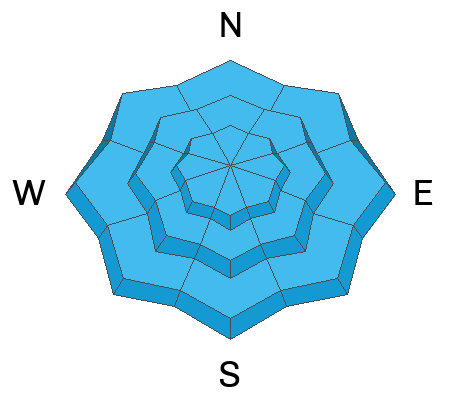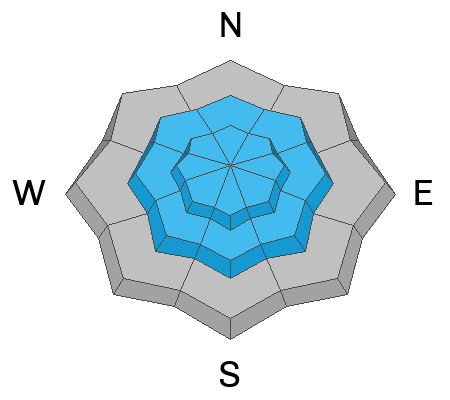Join the Utah Avalanche Center and the Utah Division of Outdoor Recreation to celebrate the Fourth Annual Avalanche Awareness week from December 4 - December 11. Click
HERE to view the full list of events for the week.
The National Weather Service has issued a Winter Weather Advisory from 6:00 PM Sunday to 9:00 PM Monday, where we could see 6-12 inches of new snow.
This morning, under mostly cloudy skies, the mountain temperatures range from 25-31 °F. Current ridgetop winds are blowing from the southwest at speeds of 15-25 mph with gusts into the low 30's. Ogden peak is humming along at 30-35 mph gusting into the 40's.
Today, you can expect partly to mostly cloudy skies and temperatures rising into the low 30's °F. Winds will remain southerly and increase throughout the day as they usher in a cold front currently stalled around the Utah/Idaho border. Southerly winds are forecasted to reach speeds of 20-30 mph, gusting into the 30's & 40's across the upper-elevation terrain.
Backcountry observers continue to report large and dangerous avalanches, and many note cracking and collapsing on nearly every step they take. Check out all the recent avalanches
HERE, as there are too many to list. Snow safety teams continue to trigger avalanches with explosives that are large enough to catch, carry, bury, and or kill a person.
Yesterday there was a report of a party that triggered a slab avalanche failing on faceted snow adjacent to Snowbasin in the backcountry. Details are limited, but it sounds large enough to bury a person. Luckily nobody was caught.










